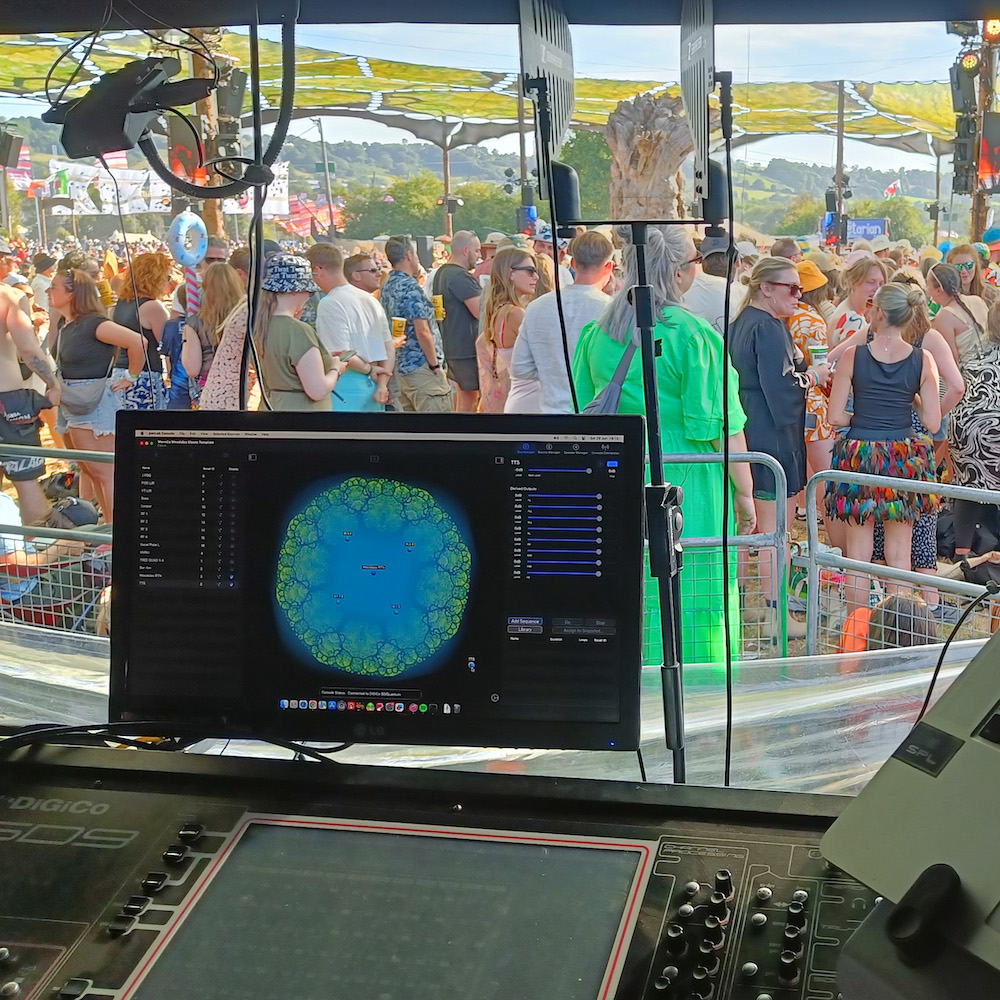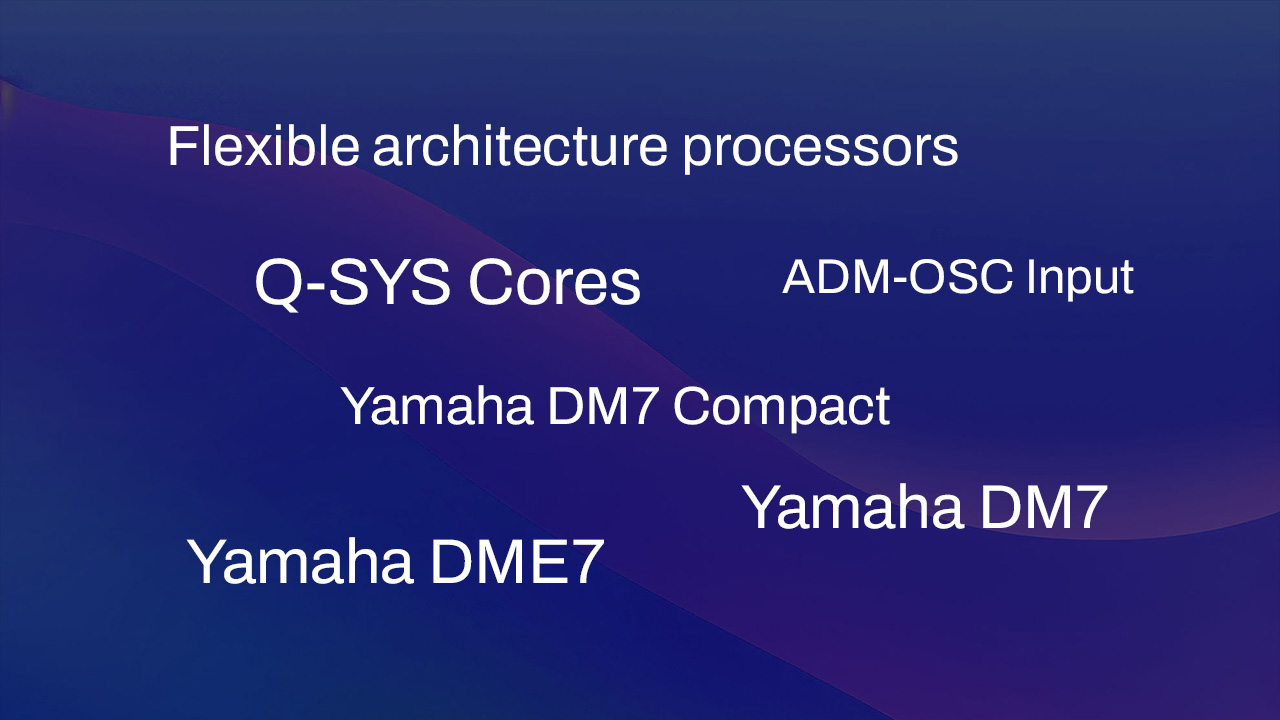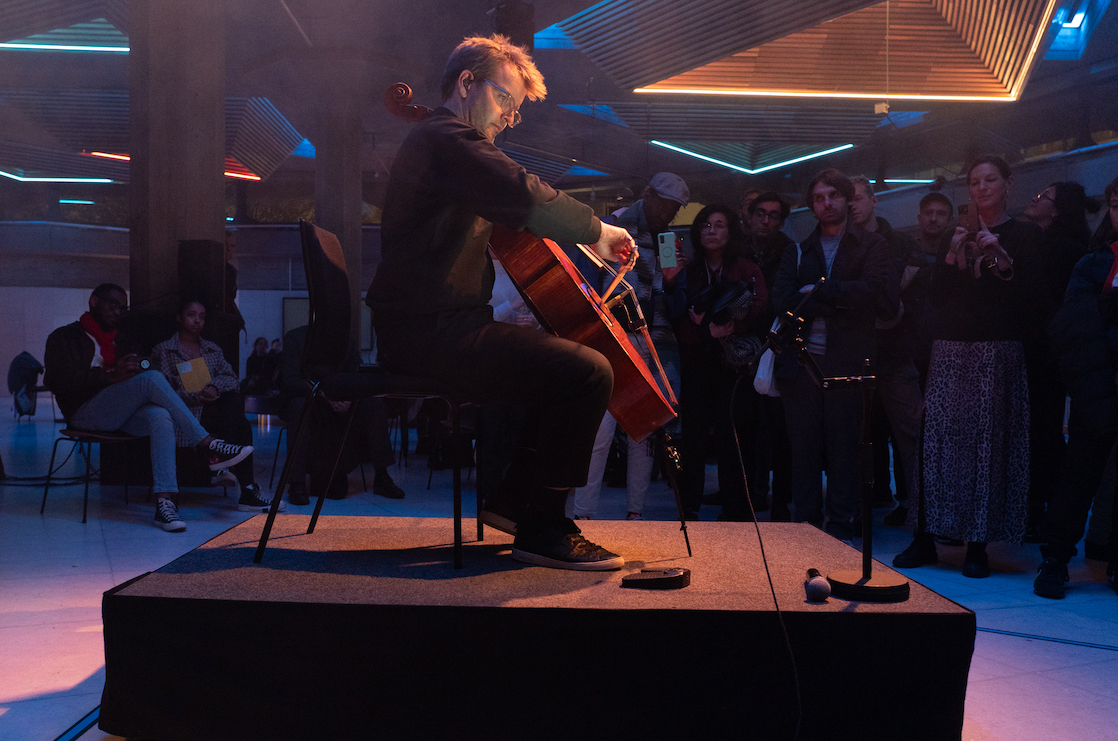
Photo credit: Pete Woodhead
UK – panLab Console, the new spatial audio solution from Innovate Audio, enabled a surround sound performance at London’s prestigious Southbank Centre on 4 November, when cellist and composer Peter Gregson presented a performance of his 2021 album, Patina, in the Southbank Centre’s Queen Elizabeth Hall Foyer.
Patina was written and recorded for spatial audio, so a live surround sound presentation was a natural step – albeit one that required a touch of audio innovation. Called Patina 360, the presentation, in which Gregson was accompanied by the Carducci String Quartet, was planned by sound designer Brett Cox, with help from one of the Southbank Centre’s senior sound technicians, Tony Birch.
Birch explains, “Our head of classical music, Toks Dada, invited Peter to stage the piece in the Foyer as one of our series of late-night classical events. The Foyer space is far from conventional, but with some lateral thinking it’s perfect to deliver an immersive experience. Peter brought in Brett as sound designer, and as I had worked with him on previous Southbank commissions, the team was neatly pre-formed. Brett had a clear idea that he wanted to work in conventional surround, but critically with height.”
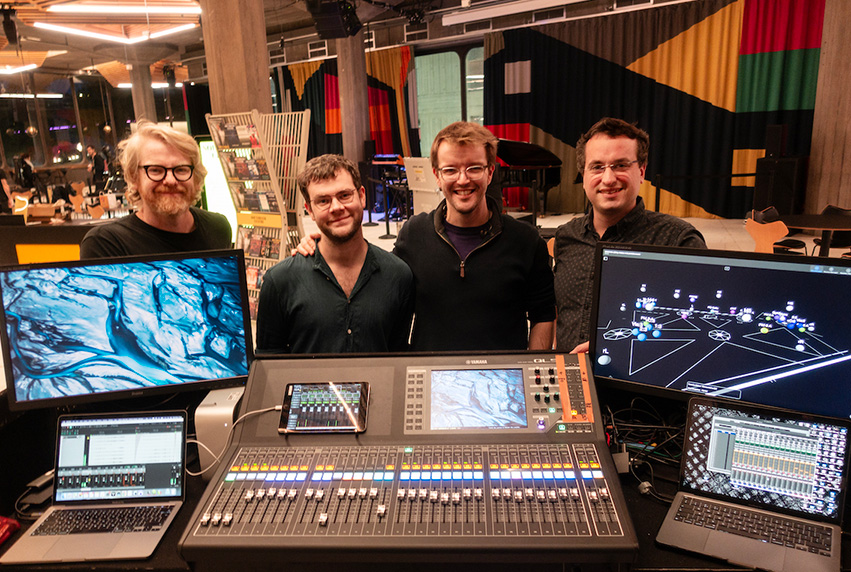
L-R: Tony Birch, Brett Cox, Peter Gregson, Dan Higgott
Building on the success of its proven panLab 3 software, Innovate Audio’s panLab Console, launched at the PLASA Show in September (where it was given a commendation by the PLASA Awards judges) adds fast and accurate spatial audio functionality to a range of live mixing consoles. Birch had been involved in the development of panLab Console after seeing a post from Innovate Audio’s Dan Higgott on social media, and had big plans for its future use, so it was an obvious choice for this project.
“It was perfect timing,” says Birch. “I was looking for the control solution for a long-term spatial audio project I’ve been working on. We facilitated its development as much as we could with frontline testing, access to consoles and an ever-flowing list of wants and snags from me! I’ve used it on a few shows in relative secret and so far, it’s worked very well.”
A large and dynamic area, the Foyer has a capacity for 900 guests and is used for a range of events including awards ceremonies, club nights, receptions and product launches. The plan for Patina 360 was to deliver a surround sound format with the all-important height layer.
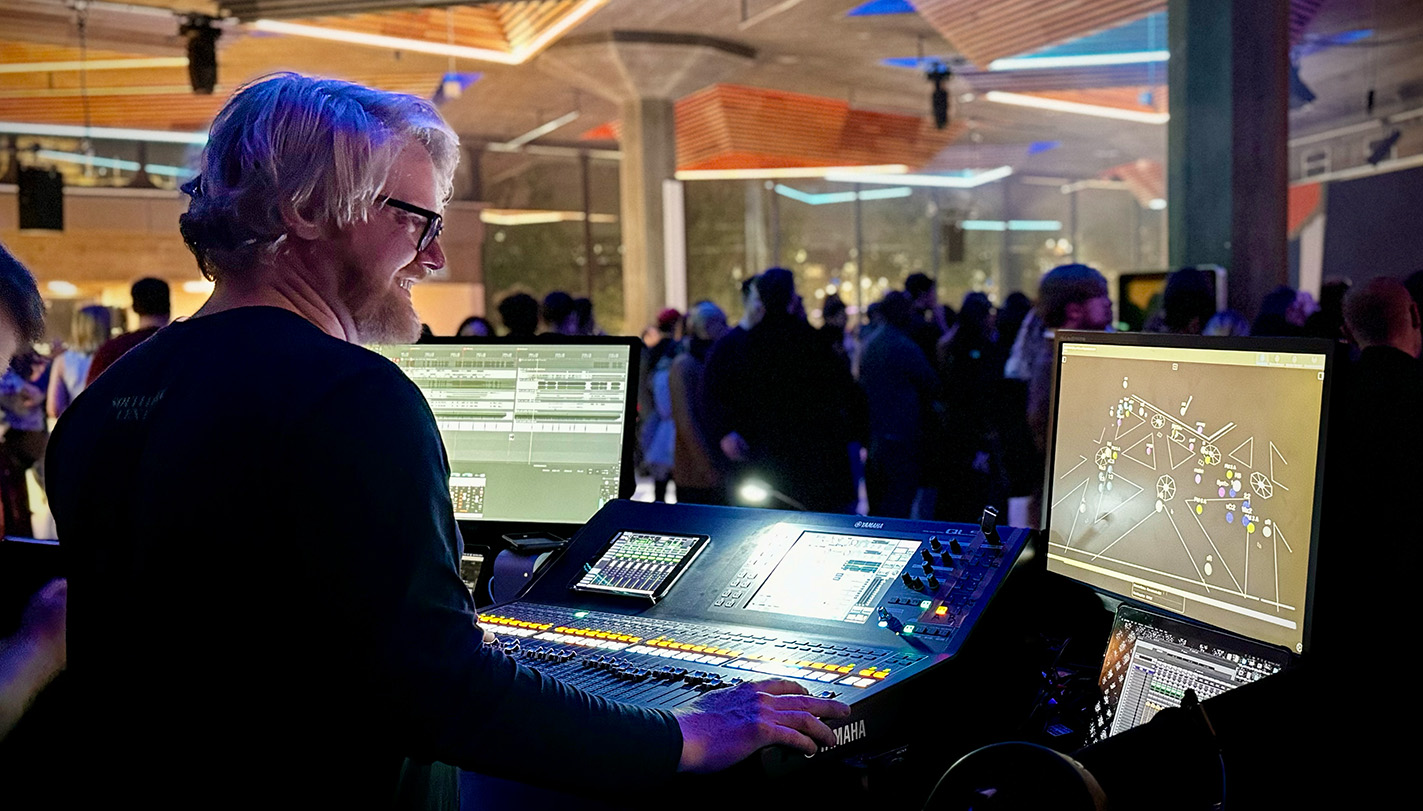
Photo credit: Dan Higgott
With Dan Higgott developing the 3D user interface, which is an essential feature of panLab Console, Birch made plans to achieve the desired immersive sound reinforcement with the new system, eventually being able to conduct a demonstration. He says, “One slice of the system was tested to prove that the concept for the height speakers actually works, which – I’m thankful to say – it does!”
At the heart of the sound system is a Yamaha QL5 mixer. Birch adds, “panLab Console drops straight into our Yamaha workflow and opens up the whole system to be able to mix the live and recorded sources in one environment.”
For the performance, Birch created a conventional 7.1 surround sound system (minus the centre channel) consisting of Meyer Sound M’elodie (the ultracompact high-power curvilinear array cabinet) and UPJ -1Ps (the compact 10” speaker). In addition, he included a ‘height’ layer of six miniature Meyer MM-4 speakers, pointing upwards into six of the iconic inverted pyramids in the Foyer’s ceiling. “The reflection from these pyramids creates a brilliant umbrella of coverage, which also maintains HF clarity,” says Birch.
Summing up, Birch says, “In this and most other spatial audio instances, with panLab Console you can get the source to be where it needs to be, very quickly. While there’s nothing new in sending to a multidimensional speaker system, there is something new in the speed and accuracy with which panLab Console can achieve this. And importantly, like its sibling panLab 3, panLab Console is not a critical component in your workflow: you can park your sources where they need to be, save that to a console scene and turn panLab Console off if you’re not using it for any sequenced or live movement.”
He adds, “panLab Console has changed my workflow in planning projects, as I’m now using it rather than CAD to visualise sound spaces, as it’s infinitely quicker and ultimately, it shows what the client/artist will hear.”
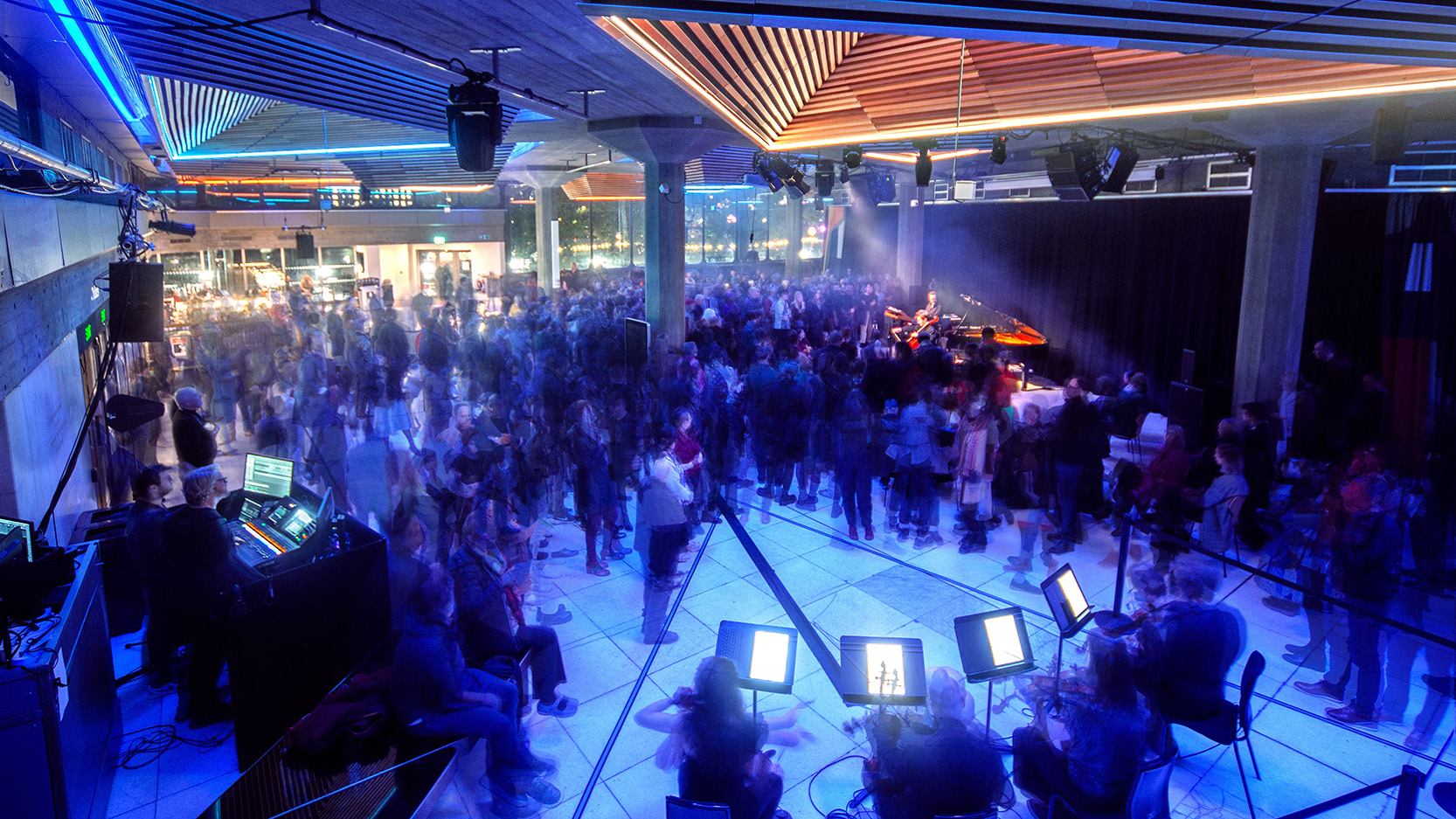
Photo credit: Tony Birch
Brett Cox, Gregson’s sound designer for the event, had this to say: “panLab finally provides intuitive and creative surround panning into any multi-speaker environment – pulling sounds away from the speakers and into the room. Being able to easily move sounds around a room with a controller and automation is a fundamental part of how I structure sound design work. Trying to recreate this spontaneity and ease of movement in a live setting has been a source of frustration – until now. Using panLab was a game changer. It opens many possibilities to experiment and create in real-time at the desk, reacting to a performance happening live. I’ve been waiting for this – it’s finally arrived and it’s great.”
After his performance, Peter Gregson commented, “panLab is more than a piece of software – it makes the room breathe and sing in a way that feels more like a creative partner and less like bricks and mortar. It was a real thrill to hear my work realised in such an immersive and musical way at the Southbank Centre.”
For Birch, with Gregson himself approving the system concept, this performance has laid the foundation for another, still secret, application of panLab Console. This more complex project, which will be announced in the fullness of time, has already had significant input from Dan Higgott and Innovate Audio and looks set to further raise the company’s status in spatialised audio.

